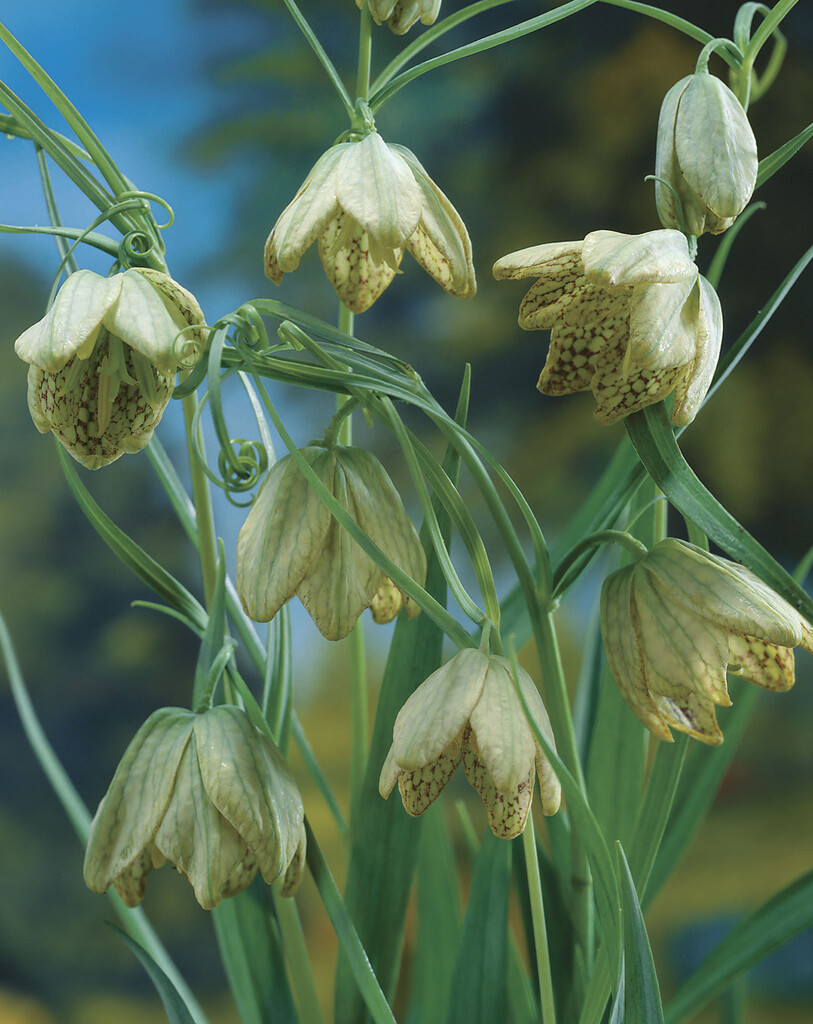Fritillaria verticillata
whorled fritillary
A bulbous, clump-forming perennial to 90cm tall with upright stems bearing whorls of narrow, grey-green leaves and loose spikes of up to 15 nodding, bell-shaped white to pale greenish flowers overlaid with a chequered pattern of green or brown
Size
Ultimate height
0.5–1 metresTime to ultimate height
2–5 yearsUltimate spread
0–0.1 metreGrowing conditions
Moisture
Well–drainedpH
Acid, Alkaline, NeutralColour & scent
| Stem | Flower | Foliage | Fruit | |
| Spring | White Green Brown | Green Grey Silver | ||
|---|---|---|---|---|
| Summer | Green Grey Silver | |||
| Autumn | ||||
| Winter |
Position
- Full sun
- Partial shade
Aspect
South–facing or West–facing or East–facing
Exposure
Exposed or Sheltered Hardiness
H4Botanical details
- Family
- Liliaceae
- Native to GB / Ireland
- No
- Foliage
- Deciduous
- Habit
- Columnar upright, Clump forming
- Potentially harmful
- Ornamental bulbs, not to be eaten. Wear gloves and other protective equipment when handling. Pets: Ornamental bulbs, not to be eaten - see the HTA guide to potentially harmful plants for further information and useful contact numbers
- Genus
Fritillaria are bulbous herbaceous perennials with lance-shaped or linear leaves and nodding bell-shaped or bowl-shaped flowers that may be solitary or in racemes or umbels
- Name status
Correct
- Plant range
- S Siberia to Japan
How to grow
Cultivation
Grow in well-drained soil in full sun or partial shade; avoid excessive winter wet
Propagation
Propagate by division of offsets in late summer
Suggested planting locations and garden types
- City and courtyard gardens
- Cottage and informal garden
- Patio and container plants
- Gravel garden
- Rock garden
- Flower borders and beds
Pruning
No pruning required
Pests
May be susceptible to slugs and lily beetle
Diseases
Generally disease-free
Get involved
The Royal Horticultural Society is the UK’s leading gardening charity. We aim to enrich everyone’s life through plants, and make the UK a greener and more beautiful place.
